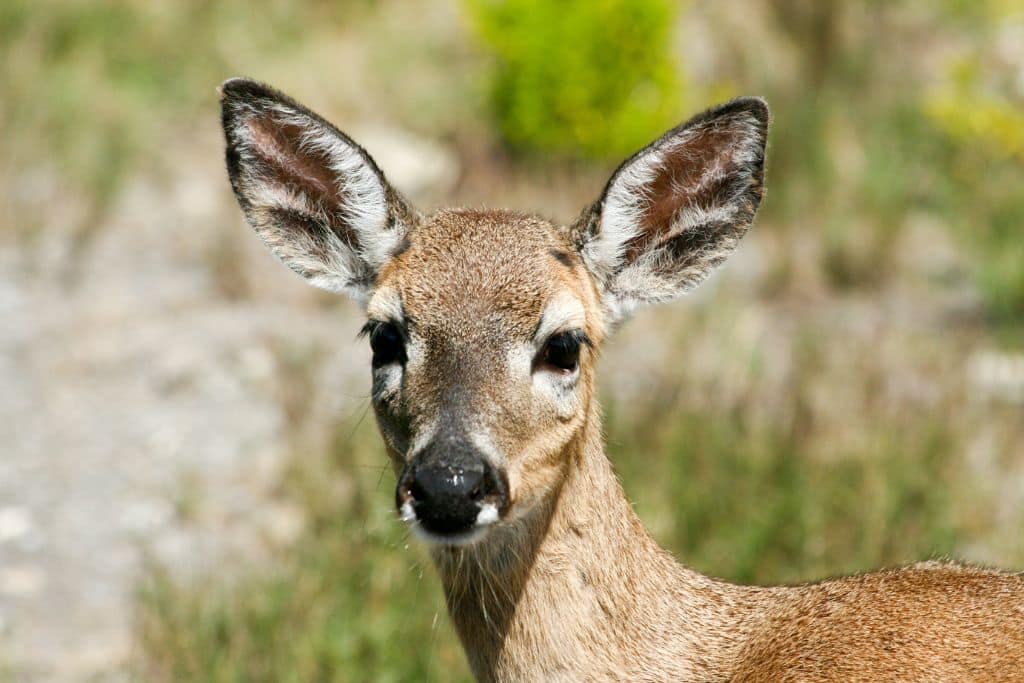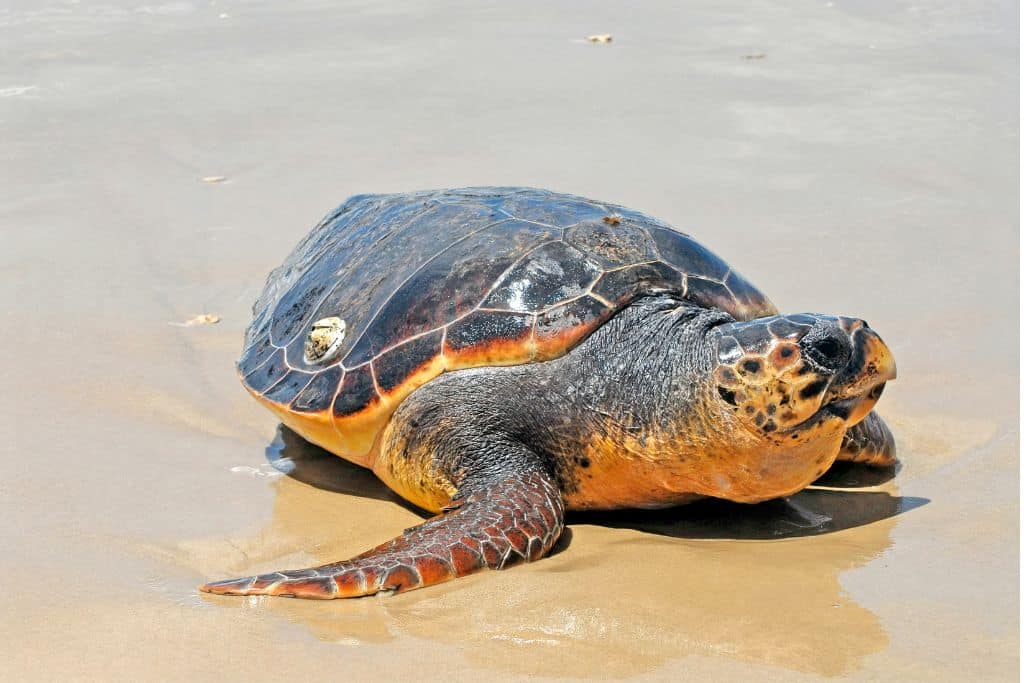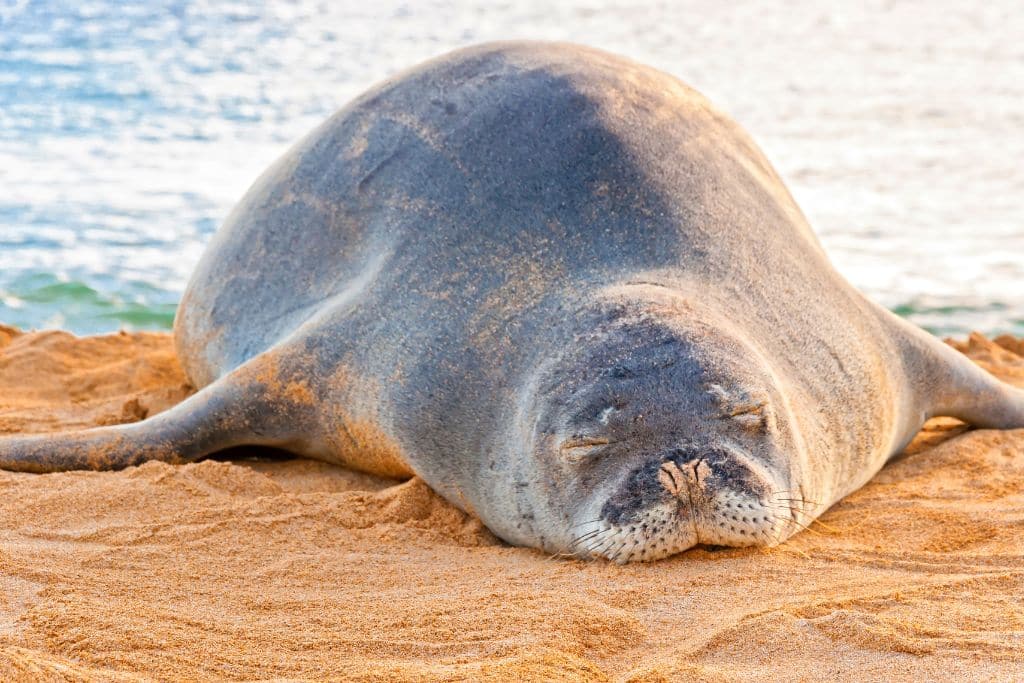Not just animals that live their entire lives on dry land are threatened by sea level rise. Several animal species, including the Florida Key deer, the loggerhead sea turtle, and the Hawaiian monk seal, all threatened species under the US Endangered Species Act, are at risk of losing critical habitat due to sea level rise. Surprisingly, the latter two are classified as marine species and would seem impervious to rising ocean conditions.
—
Even Marine Species At Risk From Sea Level Rise
Sea level rise is threatening the survival of many species and contrarily to one might think, these are not just terrestrial creatures. Seemingly diverse animals as the Florida Key deer, loggerhead sea turtle and Hawaiian monk seal, are all at risk. They all share the potential for loss of critical habitat, a fact that may surprise some as the latter two are classified as marine animals that live the majority of their lives in the ocean.
The Florida Key Deer
The Florida Keys are a string of low-lying islands that lie south and west of Miami. A hundred miles south of Florida’s second-most populous city is a long strip of land populated by fairy-sized creatures. Big Pine Key, once renowned for its small round citrus, the variety used to make key lime pies, is now noted for the diminutive deer Key deer, a golden retriever-sized relative of the common white-tailed deer. It is estimated that three-quarters of the world’s Florida key deer live on Big Pine and one other low-lying key.
The island is made of ancient coral with an elevation less than three feet above sea level. Key deer are reported to be strong swimmers but are not marine mammals. They are not adapted to survive in the event that their terrestrial habitat is inundated by rising seas driven by climate change.

Florida key deer.
Hunting and habitat loss brought about the deer’s decline a half-century ago. Under the 1973 Endangered Species Act, the population increased 33-fold. A happy ending for the story of the Key Deer, however, is far from assured due to the very real threat of sea level rise.
A sobering report by The Center for Biological Diversity shows how many species face prospects similar to the Key deer. “Left unchecked, rising seas driven by climate change threaten 233 federally protected species in 23 coastal states.”
This means that one in six of the US’s threatened and endangered species are at risk from rising sea levels with the Key deer being one of five considered the most threatened.
You might also like: 10 of the Most Endangered Species in the US
Hawaiian Monk Seal
It may be unexpected to read that the US Fish and Wildlife Service and National Marine Fisheries Service believe that the Hawaiian monk seal and the loggerhead sea turtle, two other animals in the top five of 233 federal protected species under the Endangered Species Act, are at greatest risk from sea level rise.
The Hawaiian monk sea and loggerhead turtle are by definition marine animals and therefore spend the vast majority of their lives in the ocean. Their survival is threatened by the loss of beaches integral to their reproduction. Sea turtles require beaches to make nests, deposit eggs, and produce hatchlings. Monk seals need the beaches to birth and nurse their pups.
The Hawaiian monk seal, like the Key deer, exists within a limited geographic area. The seal, as the name implies, is endemic to Hawaii and is among the most endangered seal species in the world. Monk seal face numerous threats to their existence, including a lack of food sources, entanglement in fishing gear, and shark predation; however, the loss of suitable habitat for giving birth is critical for the survival of the species. The elevation of many of the atolls or islands in the northwest of the Hawaiian Archipelago used for birthing is less than 6.5 feet (1.98 metres) above sea level. Beach erosion from storm surge and sea level rise also threaten the beaches where the seals come ashore to give birth. One of their breeding islands has already disappeared into the ocean.
Loggerhead Sea Turtle

Loggerhead sea turtle.
Loggerhead sea turtles are found worldwide. Like all sea turtles, Loggerheads are protected under the Endangered Species Act. Loggerhead turtles that nest on beaches in the US do so primarily along the Atlantic coasts of Florida, South Carolina, Georgia, and North Carolina and along the Florida and Alabama coasts in the Gulf of Mexico. Multiple factors threaten loggerheads, including marine pollution, entanglement, and boat strikes. Most significant in terms of their long-term survival is the loss of nesting habitat. This loss is the result of beach erosion, land development, and sea level rise. A striking example of the threat caused by sea level rise is taking place at the Archie Carr National Wildlife Refuge in Florida, where “42% of current loggerhead nesting beaches are expected to disappear with just 1.5 feet [0.45 metres] of sea-level rise.”
You might also like: 7 interesting Facts About Sea Turtles
Do We Have Any Solutions?
Nathan Rott, correspondent for National Public Radio’s National Desk, reported that sea level has risen 8 inches (0.2 metres) in the past century. This rate is expected to increase to 3 to 4 feet (0.6-0.9 metres), or even 6.5 (1.98 metres), by 2100. The rise is due to the melting of ice caps as Earth’s warming accelerates. As sea level rises, more land along the coasts will risk being completely submerged, leading to the displacement of the species and humans that lived in these areas. Animals like the Key deer and the monk seal have few or no other places to go. This situation presents a conundrum for the professionals charged with protecting these species.
Professionals like Nikki Colangelo of the US Fish and Wildlife Service specialise in species conservation, mitigation, and recovery planning and implementation. Colangelo considers the costs, benefits, and efficacy of alternatives in their work to preserve species. The most practical alternatives at present appear to be:
- Moving a species to another area within their geographic range
- Introducing them into new areas
- Relocating individuals to zoos or aquaria
- Banking a species DNA or allowing them to become extinct
Colangelo suggests the solution depends as much on ethics as it does logistics. And that, the answer should be dependent on “an all-of-society response.”
You might also like: What Is Causing Sea Levels to Rise?


















